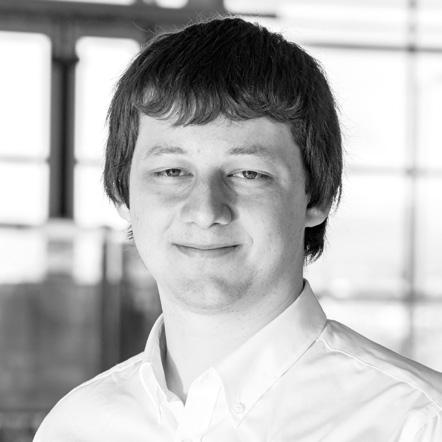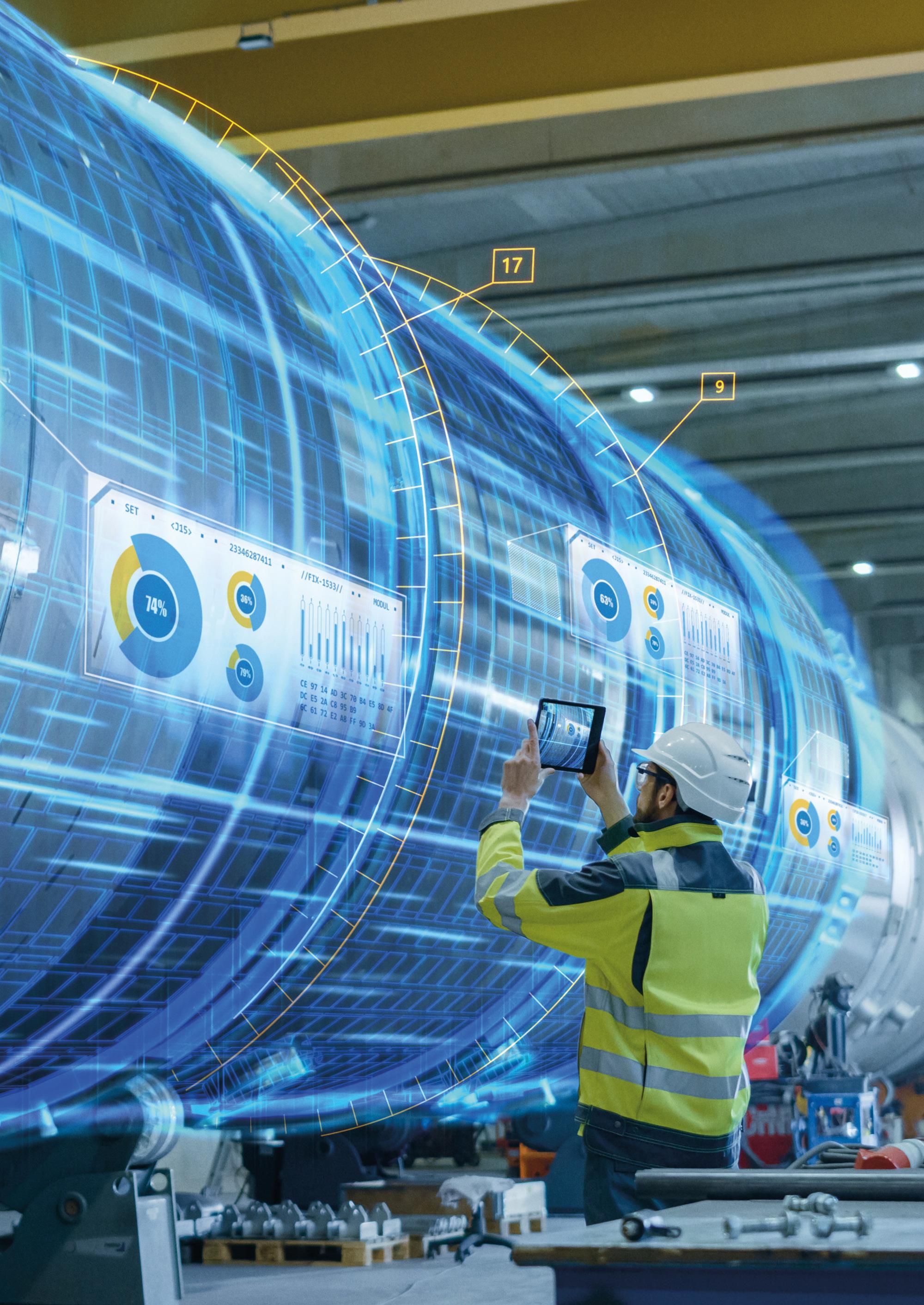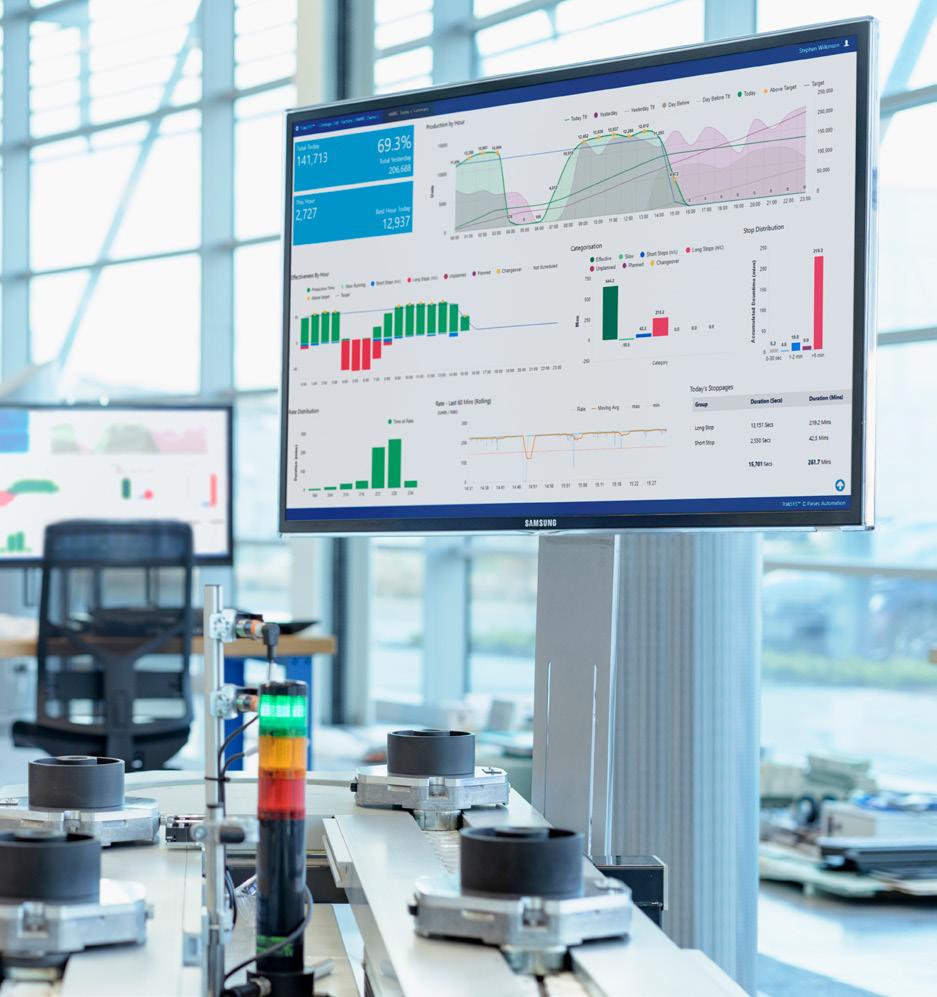
5 minute read
Digital twins: science fiction to science fact
by AMRC
The concept of a digital twin has been in practice for the past few decades, but it wasn’t until 1998 that the phrase was first mentioned – which referred to a digital counterpart of American Emmy-winning actor Alan Alda’s voice.
In the manufacturing world, discussions around digital twins began in literature in 2005, when the Institute of Electrical and Electronics Engineers (IEEE) wrote an article on ‘The web of augmented physical objects’
Advertisement
However, Jonathan Eyre, senior technical fellow for digital twins at the AMRC, says it has only been within the last five years that people have really started to exploit digital twins and what they can enable, due to developments in concepts such as the Internet of Things (IoT) and the cloud that has made them achievable.
“Digital twins are about observing the world we live in by synchronising it with digital representations to enable datadriven decisions,” says Eyre, who is coming up to having almost a decade of AMRC experience under his belt. “It is more than just a computer-aided design model or a simulation – digital twins are an approach to better understand what actual assets and processes are doing to be able to change and improve their implementations.
“Some descriptions present digital twins as assimilating data into dashboards; however, this is just a starting point. Having the ability to predict and have remote control would be a further advancement, but we need to set expectations even higher towards integrating digital twins to other such twins across supply chains and other organisations, referred to as federated digital twins.”
For Jonathan, it was the element of problem solving that got him fired up about a career in engineering. He studied aerospace engineering at the University of Sheffield and came to the AMRC in 2015 where he joined the team at Factory 2050, settling into a role within control systems and software.


“One of the key reasons I took up a placement at the AMRC was to find what took my interest the most within engineering,” he says. “At this time, the organisation was expanding its digital group, focusing on applications of digital technologies and software development, which I moved across to, looking at immersive applications and information flows.
“These areas grew my understanding of manufacturing and how complex problems need to be solved with better use of software to make decisions, and with the right information available at the right time. This led me into the area of digital twins, which I’ve been progressing and supporting research activities within ever since.”
There were lots of discussions in 2020 around trying to understand the hype around digital twins, something Jonathan says the AMRC was keen to help shed light on.
He added: “We brought together individuals from across the AMRC to collate our best articulation of everything we had learned and had been doing in this space to date.”
In October 2020, the AMRC produced the ‘Untangling the Requirements of a Digital Twin’ white paper, to produce a consistent definition for a digital twin and break down its components with classifications and practical examples. This was quickly adopted as the High Value Manufacturing (HVM) Catapult definition due to the clarity the AMRC had achieved and the rigour produced through showing their approach in defining the terms in the way it had. “The impact this achieved was beyond what we had hoped for,” says Eyre. “Whilst our primary audience was the manufacturing sector, we did keep it broad where possible so it could apply as far as possible.

“What this caused was the definition being utilised beyond manufacturing, such as in the built environment; oil and gas to name two. It was a pleasure to be able to see conversations maturing in understanding from what we had produced, so much so that our work is still being referred to as the ‘gold standard’ in understanding how to think about digital twins.”

The AMRC is now involved with a roster of projects that range in scope but centred around a digital twin approach.
Jonathan said that some of this research includes looking at a best practice guide for shopfloor integration of IoT, such as Factory+, which provides an open framework to standardise and simplify the way that data is extracted, transported, stored, processed, consumed and protected across a manufacturing organisation.
Eyre says: “Our machining team has been looking at self-optimising feedback for a machine tool, utilising online simulation and live data within the control loop –and our manufacturing intelligence team has been continuing to explore how synchronised data from manufacturing systems enables benefits to production planning and optimisation.”
The AMRC is also working with the HVM Catapult and other leading organisations on the Apollo Protocol, a project that has been initially looking at how the built environment, manufacturing and technology sectors can break the divide and unlock the benefits of digital twins. In addition, it’s calling for a common language across all sectors and industries to help the UK fully deliver the potential digital twins can provide in terms of value for productivity and sustainability.
So why do digital twins matter?
According to Eyre, they enable decision making with quality data at the fingertips, which can predict into the future and make the best use of what exists in the real world – and primarily drives cost-reduction and time savings.
“By having data intuitively understood and managed, larger step-changes in overall performance can look towards other aspects such as sustainability,” he says. “These are important, as most of the analysis is conducted virtually, meaning it’s done before anything new is built beyond what already exists or anything is changed.

“Another key driver is to improve efficiency and reduce non-value-added time of operations, be that business processes or shopfloor management. Having the ability to understand system behaviours allows better management through predictive maintenance leading to risk reduction over traditional reactive work.
“Overall, digital twins are about organisations making better decisions and increasing the performance of what we are trying to achieve in the real world. But we must not lose sight of UK manufacturing being a complex system of systems, needing individual organisations to manage their individual machines and workforce – but to also provide information across supply chains to understand the knock-on effect of delays on the overall schedule.”
To date, solutions for digital twins remain in their infancy, and organisations seeking the benefits are still considered early adopters. However, the future for digital twins is looking bright and looking forward, says Eyre, who points out that systems need to push ahead from deployments being focussed on assimilating data – which is currently integrated with a specific business software tool for analysis or monitoring purposes (typically a dashboard or predictive machine maintenance) – to needing forward systems to work together seamlessly. This is referred to as system interoperability and driven by ontologies, which requires a greater comprehensive understanding of our world in the digital space.
“For me, digital twins are about being able to play around in a safe, virtual environment, to see what the cause and effect is of changing parameters without affecting anything,” he says. “It’s also about having the trusted data source available to visualise what has previously happened, what could happen and be able to collaborate with other engineers with supporting decision tools, such as augmented intelligence to help choose the best future.”
Jonathan stresses that interoperability is critical, not to just enable digital twins, but also to allow files to be easily exchanged from one format to another at a click of a button, rather than a one-off bespoke translation.
In a final thought, he says: “Science fiction has shown us some great future looking interfaces with technology – and digital twins have become a part of that space to help solve some of our world’s greatest challenges now.”



